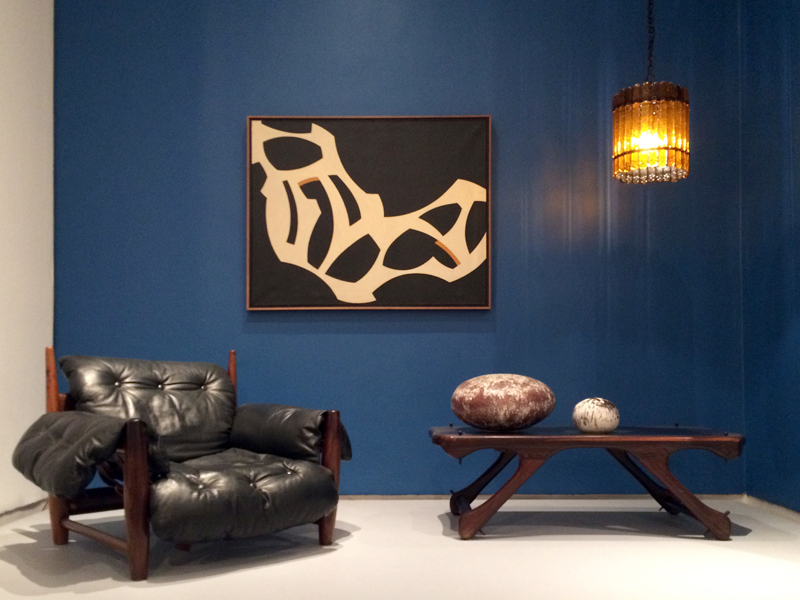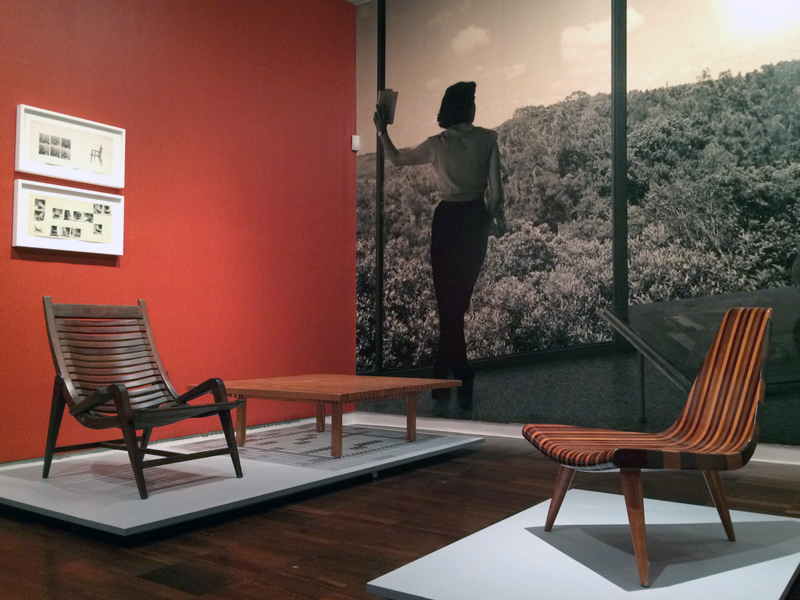
An unlikely but revelatory pair of exhibitions, one on each side of Central Park, is showcasing the long and sometimes idiosyncratic history of design in Latin America. Moderno: Design for Living in Brazil, Mexico, and Venezuela, 1940–1978, at the Americas Society (on view February 11 to May 16, 2015), is the more historically-minded of the two, concerned with the apogee of the modernist moment as it played out in three markedly distinct countries. New Territories: Laboratories for Design, Craft and Art in Latin America, at the Museum of Arts and Design (on view November 4, 2014 to April 5, 2015), more loosely surveys contemporary trends from the past fifteen years, uniting fashion, furniture, textiles, and ceramics, to name a few of the categories it seeks to dismantle. Indeed, design in both shows seems to know no boundaries and remains nearly impossible to define. Rather than enforcing a taxonomy or otherwise attempting to regulate the objects, however, the curators use this ontological slipperiness as an opportunity to complicate what could be fairly standard narratives of formal experimentation or technological innovation. Beyond their shared subject of Latin American design, the two shows diverge sharply in terms of scope, chronology, and curatorial approach, but taken together they tell the complex, often contradictory story of how design sought—and continues to seek—to shape the identity and the destiny of the region.
The titles of both shows emphasize the new, the modern, and the cutting-edge. “Moderno,” as the introductory wall text of that exhibition explains, signified “ideas of novelty and accelerated development, rather than [being] associated with a particular style or art movement.” It’s an ideological rather than aesthetic framework, and one that pertains specifically to mid-century Brazil, Mexico, and Venezuela, all of which experienced sudden industrial development and urbanization from the 1940s to the 1960s. Guest curators María Cecilia Loschiavo dos Santos, Ana Elena Mallet, and Jorge F. Rivas Pérez are smart to historicize and localize the terms of modernism by tethering it to burgeoning senses of nationalism that accompanied, and bolstered, this period of development. This context begins to explain why the exhibition at the Museum of Arts and Design, focusing exclusively on the twenty-first century, dispenses altogether with the terminology of “modernism.” The term comes from Italian designer Gaetano Pesce—whose work comprises kinetic art, architecture, and furniture design—and refers to the “new territory” in which boundaries of art, craft, and design are blurred in contemporary global practice. Like “moderno,” the phrase is deployed in a somewhat counterintuitive way, describing process instead of geography, but it is also not a stretch to draw the line one step further, from “new territory” to “new world.”
That notion of the “new world”—of the Americas as a land of possibility—is the unstated link between these two exhibitions. Utopian overtones are more obvious throughout Moderno, which situates its nearly eighty objects within a hemispheric context of mid-century developmentalist ambitions, but the very fact that it looks at this moment through the lens of design is noteworthy. Art and architecture usually get the lion’s share of the glory when it comes to visual manifestations of Latin American modernity—think of the immensely photogenic Brasília, the iconic geometry of a Carlos Cruz-Diez Fisicromía, or the future-past architectonics of a Gunther Gerzso abstraction—but design is a crucial and oft-overlooked component of the modernist project in Latin America. In the broader effort to close the gap between art and life, arguably the most successful imbrication of these two realms was realized through design itself: through objects created for utilitarian purposes, their formal rhythms and physical contours structuring and even transforming lived experience.



